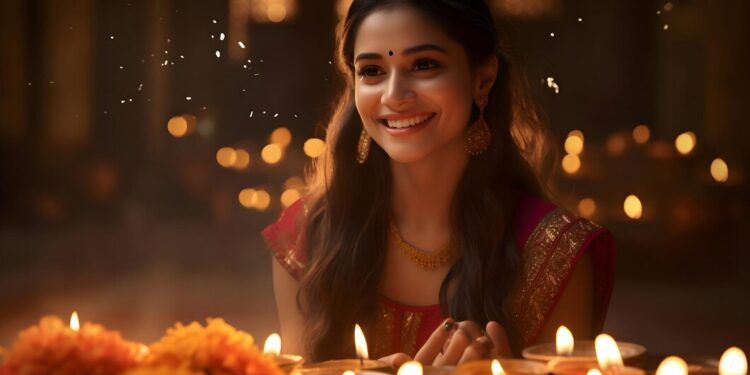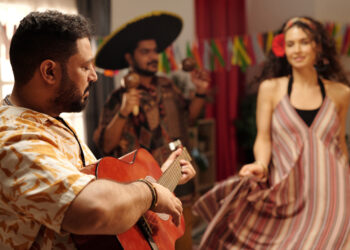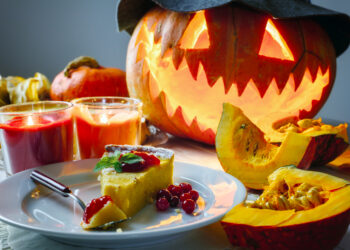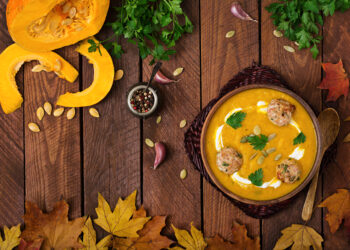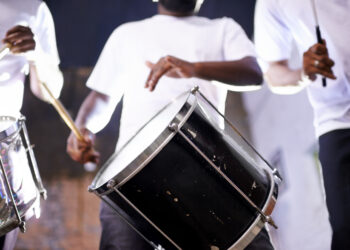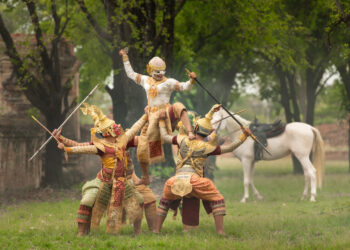Radiance Unveiled: Embarking on a Luminous Journey through the Festival of Lights
A Time of Radiant Festivity and Spiritual Illumination
Diwali, also known as Deepavali, is an enchanting Hindu festival that holds significant cultural and religious importance. It is celebrated with exuberant fervour across various parts of the world by millions of people. This Festival of Lights signifies the victory of goodness over evil and light over darkness.
The joyous occasion is marked by dazzling decorations, splendid fireworks displays, vibrant traditional attire, delectable feasts, and heartfelt gatherings. Diwali not only illuminates homes but also kindles hearts with warmth and a sense of unity.
The Significance and Global Reach
Diwali has transcended its origins in India and has become a much-anticipated event worldwide due to its universal messages of hope, prosperity, and enlightenment. While deeply rooted in Hindu traditions, Diwali has evolved into a multicultural celebration that unifies people from diverse backgrounds.
Its popularity can be attributed to the rich symbolism it embodies: fighting darkness with light, ignorance with knowledge, and fear with courage.
The festival’s emphasis on family togetherness and spiritual renewal resonates universally. In recent years, Diwali has gained recognition as an international holiday observed by various communities around the globe, from Southeast Asia to Europe to North America, creating a sense of unity among people belonging to different faiths or cultures.
The allure of Diwali lies not only in its rituals but also in its ability to unify societies through shared values such as compassion, gratitude, forgiveness, and the pursuit of inner illumination.
As we delve into the traditions and significance behind this grand celebration in subsequent sections of this article, prepare yourself for a captivating journey that will deepen your understanding of this resplendent Festival of Lights.
Historical background of Diwali
The Festival of Diwali has a rich historical background that dates back thousands of years. Its origins can be traced to ancient India, where it was celebrated as a harvest festival and marked the end of the agrarian year. Over time, the religious and cultural significance of Diwali merged with various mythologies, making it a multi-dimensional festival celebrated by Hindus, Sikhs, Jains, and some Buddhists.
Origin and Mythology Behind Diwali
One prominent mythological tale connected to Diwali is the legend of Lord Rama’s return to Ayodhya after defeating the demon king Ravana.
According to Hindu scriptures, Lord Rama embarked on a fourteen-year exile accompanied by his wife Sita and loyal brother Lakshmana. During their exile period, Sita was abducted by Ravana.
Determined to rescue her, Lord Rama sought help from Hanuman, the monkey god. Eventually, he triumphed over evil and returned to Ayodhya on the new moon day (Amavasya) in the month of Kartik.

Significance of Goddess Lakshmi during Diwali
Goddess Lakshmi plays an integral role in Diwali celebrations as she symbolizes wealth, prosperity, and good fortune. The belief is that Goddess Lakshmi visits homes during this auspicious time and blesses devotees with material abundance and spiritual well-being.
To welcome her into their households, people clean their homes meticulously before Diwali commences, as it signifies sweeping away negativity and making space for positivity. Furthermore, devotees adorn their homes with colourful rangoli patterns at entrances as an invitation to Goddess Lakshmi’s divine presence.
It is common practice to light oil lamps, or ‘diyas’, throughout the house to guide the goddess and ward off darkness. Families often pray together, seeking her blessings for a prosperous year ahead.
Religious Significance and Celebrations during Diwali
Hindu beliefs associated with Diwali
Diwali, the Festival of Lights, holds immense religious significance for Hindus across the globe. Rooted in ancient mythology and scriptures, it signifies the victory of good over evil and light over darkness.
According to Hindu beliefs, Diwali commemorates several significant events from different mythological tales. One such legend involves Lord Rama’s return to Ayodhya after his 14-year exile and triumphant defeat of the demon king Ravana.
Another tale highlights the birth of Goddess Lakshmi, who is revered as the goddess of wealth and prosperity. These mythical narratives embody profound moral lessons that continue to inspire devotees during Diwali celebrations.
Celebration of good over evil, light over darkness
At its core, Diwali symbolizes the timeless battle between righteousness and malevolence. It serves as a reminder to overcome personal demons by cultivating inner light through acts of kindness, compassion, and forgiveness.
During this festival, Hindus perform various rituals that signify their commitment to eradicating darkness from their lives and embracing goodness in all its forms. The lighting of oil lamps (diyas) in homes not only illuminates physical space but also signifies the illumination of one’s soul with knowledge and wisdom.
Worshiping different deities during the festival
Diwali is a multi-faceted celebration that involves worshipping different deities depending on regional customs and traditions within Hinduism. While Lord Rama holds central importance due to his epic tale being interconnected with Diwali celebrations across India, other deities are also revered during this auspicious time.
Goddess Lakshmi is fervently worshipped for her association with wealth and prosperity; the arrival of her blessings is considered vital for a prosperous year ahead.
Lord Ganesha, the remover of obstacles, is also worshipped to ensure a smooth and successful journey throughout the festivities. Additionally, devotees invoke the blessings of Goddess Saraswati for knowledge and wisdom and seek the guidance of Lord Kuber for financial abundance during this festive period.
With such rich religious significance and diverse rituals associated with Diwali, it becomes evident why it holds such deep-rooted importance to Hindus around the world.
The celebration of good triumphing over evil, the metaphorical illumination of one’s soul, and reverence towards various deities all contribute to making Diwali a profound festival that fosters spiritual growth and communal harmony.

Preparations leading up to Diwali
Cleaning and decorating homes for the festival
Preparing for Diwali is not merely a matter of buying gifts and sweets; it involves meticulous cleaning and beautification of homes. This process begins weeks before the festival, as families embark on a thorough cleansing spree. Every nook and cranny is attended to, with dust banished from forgotten corners.
Floors are scrubbed until they gleam, while walls are washed to restore their fresh appearance. This cleaning ritual represents the removal of negative energies and impurities that may have accumulated throughout the year, making way for positive vibrations.
Traditional cleaning rituals (known as “Diya cleaning”)
A significant aspect of pre-Diwali preparations is the tradition known as “Diya cleaning.” Diyas, small oil lamps made from clay or brass, play a central role in Diwali celebrations. It is believed that these humble lamps bring light into one’s life and dispel darkness.
To honour this symbolism, families meticulously clean each diya before using it during the festival. Each diya is delicately wiped clean with a soft cloth or brush to ensure it shines brightly when illuminated during Diwali night.
Vibrant decorations using rangoli, diyas, and flowers
Once the cleaning rituals are complete, it’s time to transform homes into mesmerizing abodes filled with vibrant decorations. Rangoli designs take centre stage during Diwali preparations – intricate patterns composed of finely ground coloured powders or flower petals adorn floors near doorways and courtyards.
These exquisite artworks are believed to invite goddess Lakshmi into homes and bestow good fortune upon those who reside within them.
In addition to rangolis, diyas take on various forms of creativity during Diwali preparations. From traditional clay diyas to elaborate brass or silver ones, families carefully select and arrange these magical lamps around their homes.
A multitude of diyas illuminate every corner and crevice, casting a warm glow that symbolizes the triumph of light over darkness. Furthermore, flowers play an integral role in Diwali decorations.
Brightly coloured marigold garlands and fragrant roses are meticulously strung together to create beautiful floral arrangements that grace doorways and altars. The delicate scent of flowers permeates the air, enhancing the festive ambience and evoking a sense of joy and tranquillity.
The cleaning rituals, Diya preparation, and vibrant decorations during Diwali preparations all come together to transform homes into sanctuaries of light and positivity. Each step is performed with the utmost care and devotion, ensuring that the festival is celebrated in an atmosphere of purity and beauty.
The Five Days of Diwali Celebrations
Day 1: Dhanteras – Worshiping Wealth and Prosperity
Submerged in an atmosphere of anticipation and excitement, the first day of Diwali, known as Dhanteras, ushers in a spirit of prosperity and abundance. On this auspicious day, people exchange heartfelt wishes along with thoughtful gifts, symbolizing their desire for prosperity to surround their loved ones.
Many choose to buy new items or make significant purchases on this day, as it is believed to bring good luck throughout the year. The most cherished tradition associated with Dhanteras is the purchase of gold or silver articles, as it is believed to invite wealth and affluence into one’s life.
Day 2: Naraka Chaturdashi – Conquering Darkness
As the second day dawns upon the Diwali celebrations, it brings forth Naraka Chaturdashi, a time when darkness is confronted and overcome. To ward off evil spirits and welcome light into their lives, people illuminate their homes by lighting oil lamps known as diyas.
These flickering flames not only dispel darkness but also symbolize hope, purity, and divine blessings. Before sunrise, individuals partake in traditional oil bath rituals that cleanse both the body and the soul while embracing positivity and spiritual rejuvenation.
Day 3: Deepavali – Main Day of Celebrations
The third day marks the pinnacle of Diwali celebrations—Deepavali itself. This vibrant festival floods homes with an enchanting display of twinkling diyas, elegantly crafted candles, and dazzling electric lights that adorn every nook and corner. The festival comes alive with a symphony of colours as households are meticulously decorated to create a mesmerizing ambience.
Bursting fireworks during this time signifies more than just visual splendour; it holds profound symbolism, representing the triumph of light over darkness and good over evil. The resounding crackles and luminous explosions serve as a reminder of the power we possess to illuminate even the darkest corners of our lives.
Day 4: Govardhan Puja – Worshiping Nature
The fourth day of Diwali is dedicated to Govardhan Puja, a celebration that venerates nature and its bountiful offerings. It commemorates Lord Krishna’s act of lifting the Govardhan Hill to protect villagers from torrential rains.
Devotees express gratitude to nature for its generosity by creating intricate mountain-shaped structures made with cow dung, symbolizing the hill lifted by Lord Krishna. These artful creations are adorned with flowers and worshipped, signifying reverence for our environment and highlighting our responsibility to protect and nurture Mother Earth.
Conclusion
As the Festival of Lights reaches its conclusion, Diwali leaves us with a resounding message. It serves as a reminder that no matter how daunting life’s challenges may seem, there is always a glimmer of hope that can pierce through the darkness.
Diwali instils in us an unwavering belief in our ability to conquer obstacles, embrace prosperity, illuminate others’ lives through acts of kindness, and foster an enduring sense of unity among diverse communities.
May this festival kindle within us an eternal flame that guides us towards happiness, prosperity, and compassion throughout the year ahead


